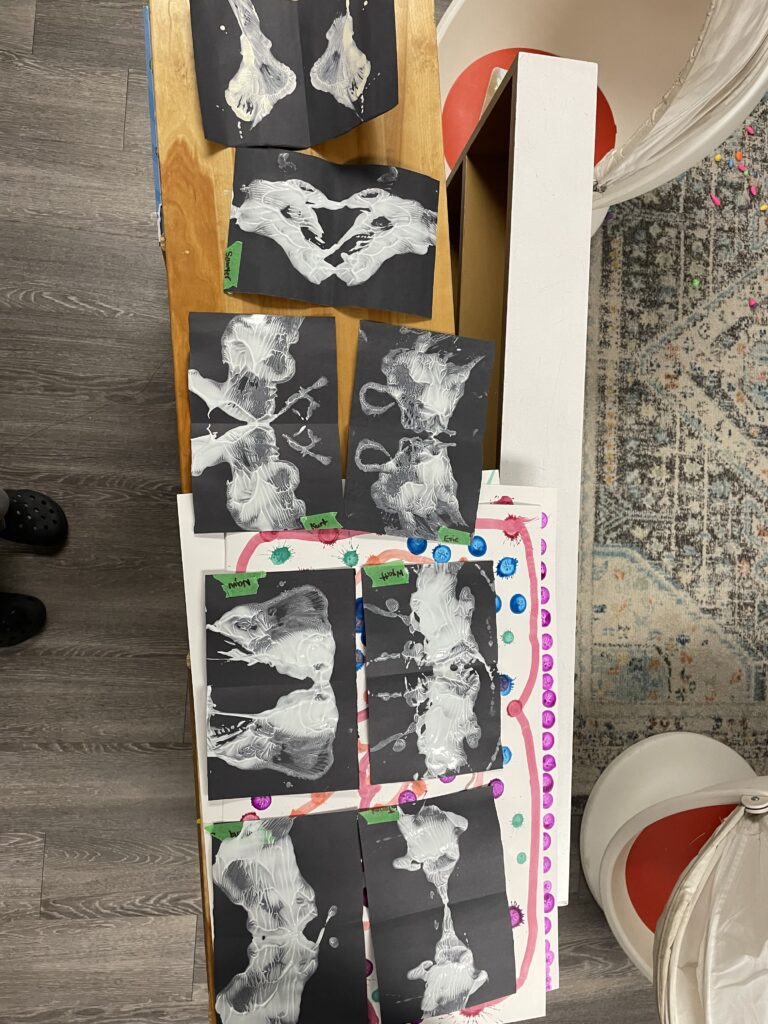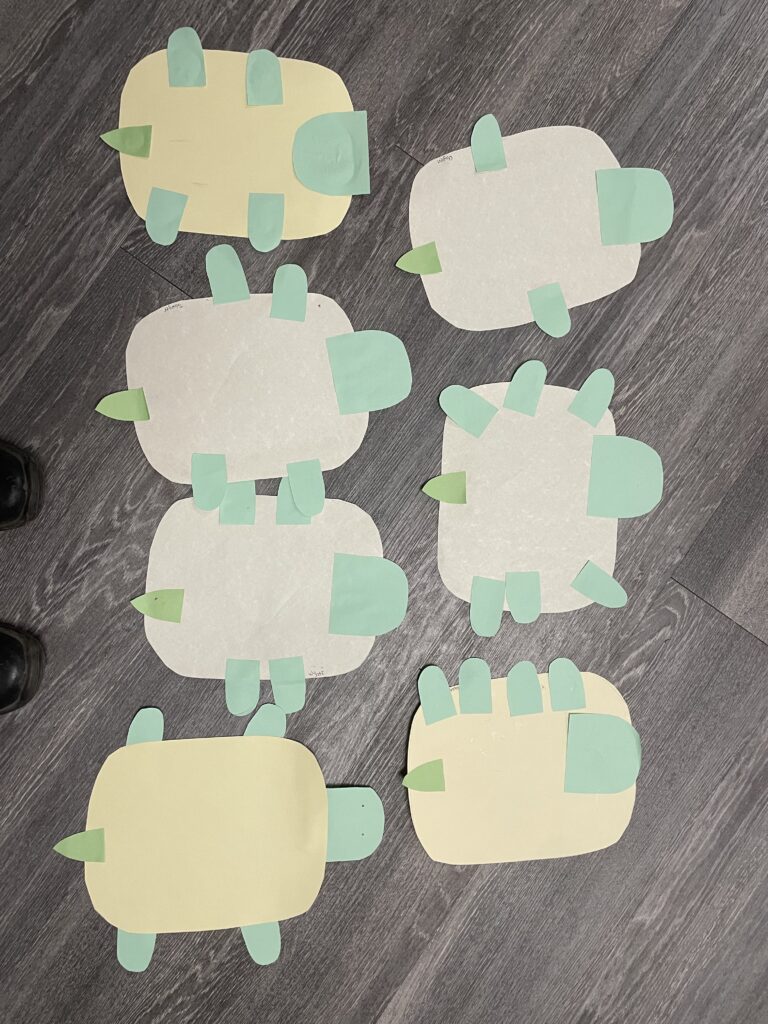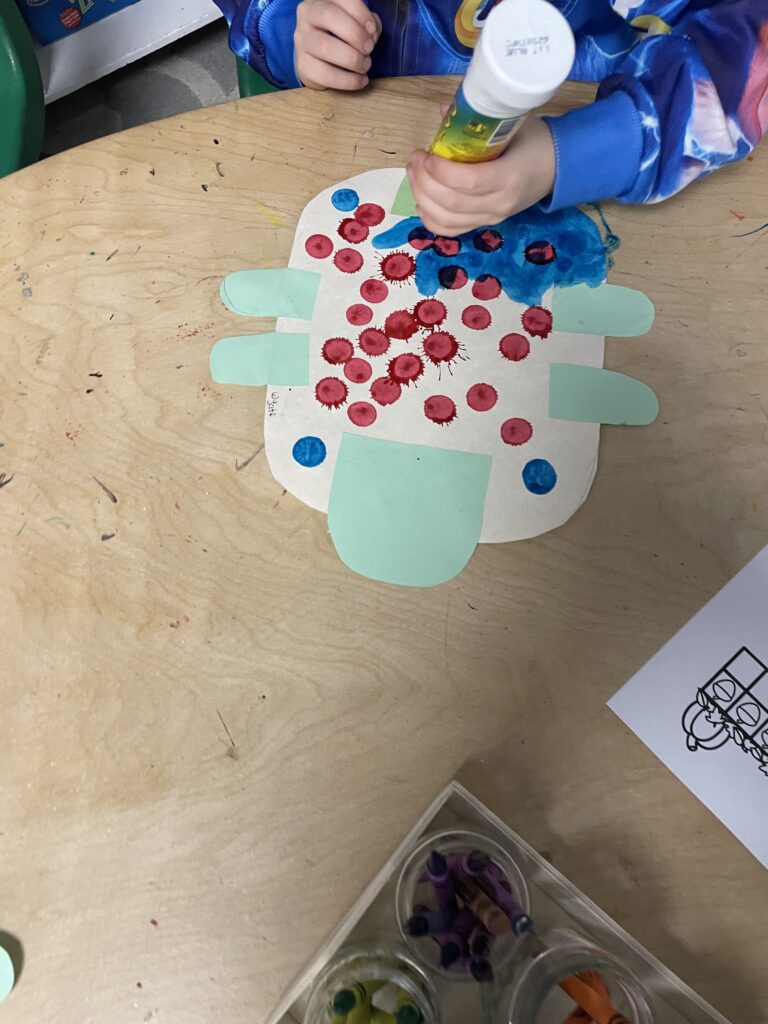On Friday, January 19th, I organized and planned my first interaction with paint on my own for the children in my practicum centre. I chose to do string paintings because the supplies needed are easily accessible and there are many affordable options. Another aspect that spoke to me was that each painting should, in theory, turn out quite unique when compared to the others.

Post craft reflection
I am happy that I chose to do this with the children. I thought it went great, the kids seemed to be enjoying themselves, and everyone had fun trying to guess what their paintings best resembled. Looking back, I probably could have hung back a little more and assisted the children a little less. But overall, I am very happy with how this played out.
Turtles!!!
On Friday, March 1st I did a turtle activity with the children. I decided on Turtles because I noticed on previous days that the children seemed intrigued by them. I initially planned to cut out all the pieces and glue the turtles together for the children so that they could use bingo stampers to decorate the turtle shells (next week). After some reflection, I realized that the children were capable of gluing and it was an opportunity to turn a one-day activity into a two-day activity.

Post craft reflection
I am happy that I made the change to have the children glue their own turtles. I gave each child the ‘correct’ amount of legs, heads, and tails and I was pleasantly surprised to see a turtle with six legs and another with only two. These variations wouldn’t have been possible if I had glued for them. Next week we will be decorating their shells.
Turtles part 2



